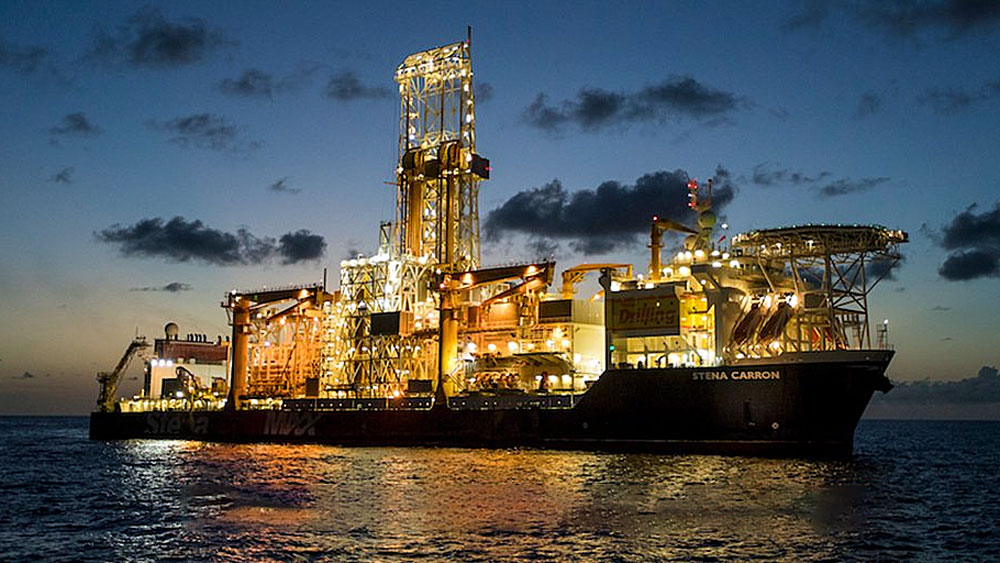Most South American economies have grown sluggishly this year. But Guyana is an outlier, both regionally and globally. The small country is on track to achieve the world’s highest GDP growth rate in 2022 – a whopping 57.8% – thanks to steadily increasing production from an offshore field where ExxonMobil struck oil in 2015.
It took the company a few years to start pumping operations in the area, which only produced the first barrels of oil in December 2019. Guyana’s oil reserves are so large that the country’s daily production is expected to increase from around 360,000 barrels per day today to around 1 million barrels per day by 2027, overtaking Kuwait as the world’s highest per capita oil producer.
Guyana was a relatively poor country before it hit oil seven years ago. Since then, the country’s politics have been dominated by the question of how this wealth should be distributed.

Many feared that without proper safeguards, Guyana would fall victim to the so-called resource curse, which states that an abundance of natural resources discourages countries from developing other sectors and creates conditions ideal for corruption.
In 2016, government agencies approved an agreement with ExxonMobil and partners that gives Guyana an unusually small share of profits from an oil-rich prospect called the Stabroek Block. “It’s the most favorable arrangement [for oil companies] that I’ve ever seen in the industry,” Tom Mitro, a fellow at Columbia University’s Center on Sustainable Investment and former Chevron chief financial officer, told Bloomberg.
The companies pay the government a quarterly royalty of 2% of revenue from oil produced in the block. They are allowed to use 75% of this revenue to pay for their past and ongoing exploration costs, with the remainder split equally between the companies and the state.
The range of costs that companies can deduct before paying profits to the government is unusually wide, according to Mitro and other analysts. ExxonMobil told Bloomberg the agreement mirrors agreements in other countries at such an early stage of oil exploration.
Dissatisfaction with the way Guyana’s largely Afro-Guyanese-backed government was handling oil deals was a key reason it was voted out in 2020, Guyanese journalist Kiana Wilburg told Foreign Policy. Now the largely Indoguan-backed government that replaced them is responding to the criticism by adjusting its tentative terms for a new oil lease auction that started last week and will run until May. The areas to be auctioned are between the Stabroek block and the coastline.
The draft rule sets a 10% royalty for the government, sets the cost recovery percentage of revenue at 65% instead of 75%, and introduces a 10% corporate tax. After cost recovery, profits continue to be split 50:50.
In late 2021, Guyana’s government set up a sovereign wealth fund with the oil proceeds and shortly thereafter approved plans to use almost all of its then holdings. According to its own statements, the government has allocated around US$600 million from the fund to the 2022 budget, which is expected to be 44.3% higher than that of the previous year.
“In conversations with several young people, one senses an optimism about their future in Guyana, instead of decades of cynicism and an overwhelming urge to emigrate,” wrote the editors of Guyana’s Stabroek News in July of the impact of the oil boom on the local job market.
Still, transparency advocates, opposition politicians and investigative reporters in the country have been urging the government – so far with little success – to report more openly and systematically on how it spends its oil money, including the US$600 million earmarked for this year are provided.
“Ideally, proceeds should be directed towards steering the economy away from oil and gas, so that in 30 years, when industry… [needs to be phased out], agricultural processing, high-quality manufacturing, and financial and technology services will be paramount,” wrote the Stabroek News in an April editorial.
The government says it has begun to engineer such change. In July, it released a strategy for low-carbon development, including investment in forest conservation, tourism and sustainable housing planning.
The strategy is part of Guyana’s response to criticism from environmentalists who say Guyana shouldn’t be drilling for oil at all. The other part of the argument relies on historical injustices.
President Irfaan Ali estimates Guyana has about 30 years before global demand for oil dries up and argues that oil sold by then should benefit poorer countries hardest hit by climate change. Barbados Prime Minister Mia Mottley, who was a star at the recent UN climate conference, has made similar arguments and Barbados is now preparing its own auction of offshore oil and gas leases.
Meanwhile, some Guyanese continue to scrutinize their country’s oil deals. This month, social media users and opposition members criticized ExxonMobil for putting up posters across the country that read: “Guyana receives 52% of all profits from the Stabroek block”.
No mention was made of the 75% of revenue that goes to the oil company’s costs. A member of the opposition and former head of the country’s environmental protection agency called the posters “propaganda to mislead the people of Guyana and to silence their legitimate concerns.”
The terms of the latest Guyana contracts are subject to change. Mitro told Foreign Policy that the new draft contracts are unusual in that they don’t include provisions for periods when oil is particularly profitable.
Such a clause could hypothetically kick in during an oil price surge like that following Russia’s invasion of Ukraine in February, increasing Guyana’s share of the proceeds.
“As for oil and gas in Guyana, despite the discovery in 2015, there are still many industry fundamentals that many citizens are not fully aware of,” Wilburg said. She has delved into the subject and hosts a show on Kaieteur Radio called Guyana’s Oil and You.
With information from latinapress

